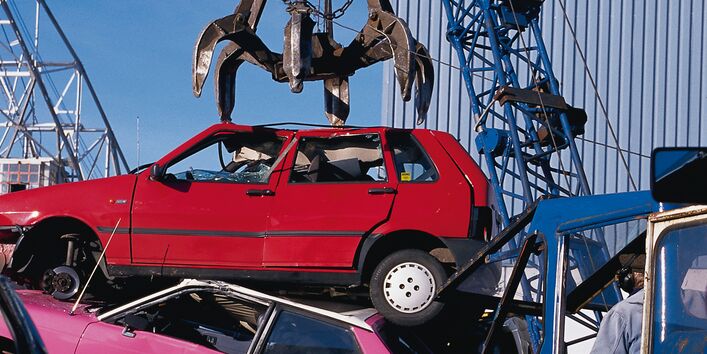An estimated 310,000 vehicles with unknown whereabouts
In Germany, some 560,000 end-of-life vehicles arose in 2018. Recycling of these vehicles complied with the European recycling and recovery targets, yet the whereabouts of around 310,000 vehicles are unknown. UBA therefore recommends the introduction of minimum requirements for vehicle registration systems in respect of deregistration of vehicles.
The number of end-of-life vehicles (ELVs) rose by almost 150,000 (36 percent) within two years: Although there was a historical low of around 413,000 ELVs in 2016, 560,455 ELVs (595,761 tonnes) were produced in Germany in 2018, the highest figure recorded save for the exceptional year of the environmental premium in 2009. The source of these data is the Federal Statistical Office data on waste disposal. The increase is likely to be partly due to the exchange premiums for older diesel vehicles which several manufacturers have offered since August 2017.
Based on the data provided by the Federal Statistical Office, a rate of 87.1 percent for the reuse and recycling of ELVs and a rate of 95.7 percent for reuse and recovery (including energy recovery) were calculated for the year 2018 for the annual reporting to the EU Commission. As in previous years, Germany thus achieved the targets of the EU End-of-Life Vehicles Directive of 85 percent and 95 percent respectively. During the dismantling of ELVs before shredding, an average of 3 kilograms of plastic parts per ELV were separated for recycling. This confirms a positive trend: in 2017, the figure was 1.7 kilograms. However, this figure still falls far short of the target of an average of 20 kilograms of plastic per vehicle defined by UBA for the dismantling of ELVs.
The statistical gap in data about unknown vehicle whereabouts continues to pose a major challenge for the recovery of ELVs. For 2018, the German Environment Agency estimated the figure for Germany at around 310,000 vehicles. However, there are uncertainties due to some gaps in the data. Since the unknown fate is a phenomenon occurring throughout the EU, it should be effectively addressed in the forthcoming revision of the EU End-of-Life Vehicles Directive. To this end, the German Environment Agency published a Scientific Opinion Paper outlining recommendations for measures to effectively prevent the loss of ELVs to illegal dismantling. The recommendations target minimum requirements for national vehicle registration systems.
